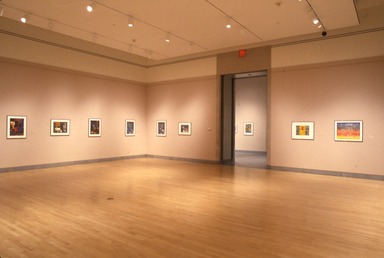

Graphic Odyssey: Romare Bearden as Printmaker, May 05, 1995 through July 09, 1995 (Image: PDP_E1995i001.jpg Brooklyn Museum photograph, 1993)
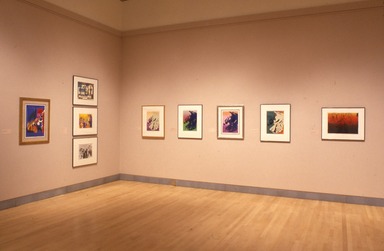
Graphic Odyssey: Romare Bearden as Printmaker, May 05, 1995 through July 09, 1995 (Image: PDP_E1995i002.jpg Brooklyn Museum photograph, 1993)

Graphic Odyssey: Romare Bearden as Printmaker, May 05, 1995 through July 09, 1995 (Image: PDP_E1995i003.jpg Brooklyn Museum photograph, 1993)

Graphic Odyssey: Romare Bearden as Printmaker, May 05, 1995 through July 09, 1995 (Image: PDP_E1995i004.jpg Brooklyn Museum photograph, 1993)
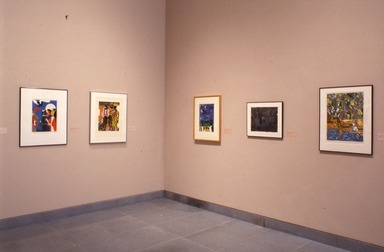
Graphic Odyssey: Romare Bearden as Printmaker, May 05, 1995 through July 09, 1995 (Image: PDP_E1995i005.jpg Brooklyn Museum photograph, 1993)
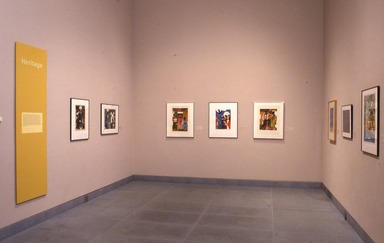
Graphic Odyssey: Romare Bearden as Printmaker, May 05, 1995 through July 09, 1995 (Image: PDP_E1995i006.jpg Brooklyn Museum photograph, 1993)

Graphic Odyssey: Romare Bearden as Printmaker, May 05, 1995 through July 09, 1995 (Image: PDP_E1995i007.jpg Brooklyn Museum photograph, 1993)
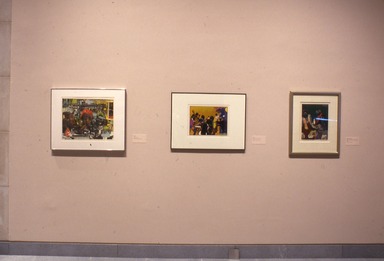
Graphic Odyssey: Romare Bearden as Printmaker, May 05, 1995 through July 09, 1995 (Image: PDP_E1995i008.jpg Brooklyn Museum photograph, 1993)

Graphic Odyssey: Romare Bearden as Printmaker, May 05, 1995 through July 09, 1995 (Image: PDP_E1995i009.jpg Brooklyn Museum photograph, 1993)

Graphic Odyssey: Romare Bearden as Printmaker, May 05, 1995 through July 09, 1995 (Image: PDP_E1995i010.jpg Brooklyn Museum photograph, 1993)

Graphic Odyssey: Romare Bearden as Printmaker, May 05, 1995 through July 09, 1995 (Image: PDP_E1995i011.jpg Brooklyn Museum photograph, 1993)

Graphic Odyssey: Romare Bearden as Printmaker, May 05, 1995 through July 09, 1995 (Image: PDP_E1995i012.jpg Brooklyn Museum photograph, 1993)
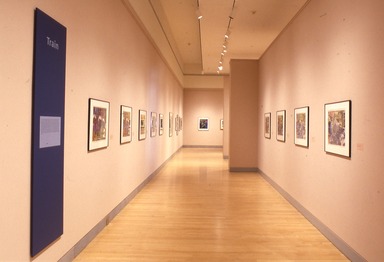
Graphic Odyssey: Romare Bearden as Printmaker, May 05, 1995 through July 09, 1995 (Image: PDP_E1995i013.jpg Brooklyn Museum photograph, 1993)
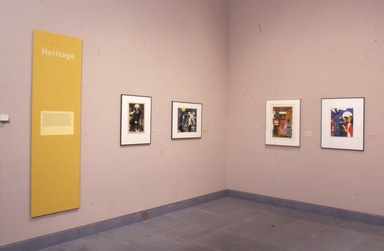
Graphic Odyssey: Romare Bearden as Printmaker, May 05, 1995 through July 09, 1995 (Image: PDP_E1995i014.jpg Brooklyn Museum photograph, 1993)

Graphic Odyssey: Romare Bearden as Printmaker, May 05, 1995 through July 09, 1995 (Image: PDP_E1995i015.jpg Brooklyn Museum photograph, 1993)

Graphic Odyssey: Romare Bearden as Printmaker, May 05, 1995 through July 09, 1995 (Image: PDP_E1995i016.jpg Brooklyn Museum photograph, 1993)

Graphic Odyssey: Romare Bearden as Printmaker, May 05, 1995 through July 09, 1995 (Image: PDP_E1995i017.jpg Brooklyn Museum photograph, 1993)

Graphic Odyssey: Romare Bearden as Printmaker, May 05, 1995 through July 09, 1995 (Image: PDP_E1995i018.jpg Brooklyn Museum photograph, 1993)

Graphic Odyssey: Romare Bearden as Printmaker, May 05, 1995 through July 09, 1995 (Image: PDP_E1995i019.jpg Brooklyn Museum photograph, 1993)
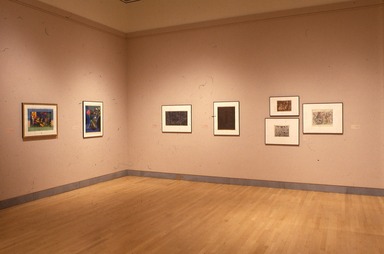
Graphic Odyssey: Romare Bearden as Printmaker, May 05, 1995 through July 09, 1995 (Image: PDP_E1995i020.jpg Brooklyn Museum photograph, 1993)
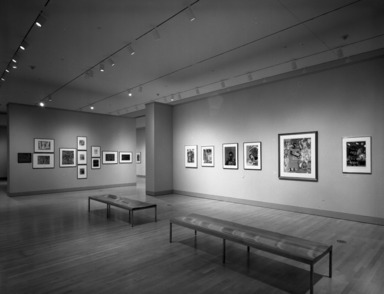
Graphic Odyssey: Romare Bearden as Printmaker, May 05, 1995 through July 09, 1995 (Image: PHO_E1995i068.jpg Brooklyn Museum photograph, 1993)
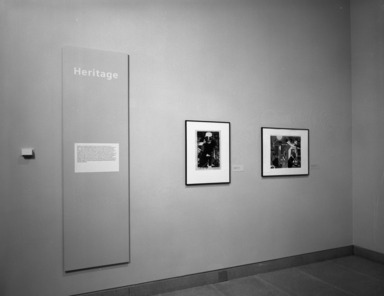
Graphic Odyssey: Romare Bearden as Printmaker, May 05, 1995 through July 09, 1995 (Image: PHO_E1995i069.jpg Brooklyn Museum photograph, 1993)
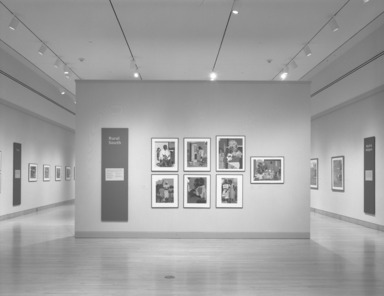
Graphic Odyssey: Romare Bearden as Printmaker, May 05, 1995 through July 09, 1995 (Image: PHO_E1995i070.jpg Brooklyn Museum photograph, 1993)
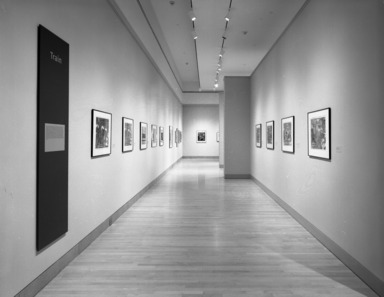
Graphic Odyssey: Romare Bearden as Printmaker, May 05, 1995 through July 09, 1995 (Image: PHO_E1995i071.jpg Brooklyn Museum photograph, 1993)
Graphic Odyssey: Romare Bearden as Printmaker
-
March 1, 1995
A Graphic Odyssey: Romare Bearden as Printmaker, the first retrospective of the artist’s prints, will be presented at The Brooklyn Museum from May 5 through July 9, 1995. Comprising more than 100 aquatints, collographs, drypoints, etchings, lithographs, monoprints, photoengravings, and silkscreens, the exhibition brings together, for the first time, this important body of the artist’s work, an integral part of the history of American graphic art.
Romare Bearden (1912-1988) did not begin making prints in earnest until the 1960s. Many prints were created using traditional techniques, but Bearden, along with the master printmakers who assisted him, also developed and refined printing processes allowing the production of works unique in their complexity. A series of hand-colored photo-engravings completed in the early 1970s takes trains as its subject, a potent symbol for Bearden and many other African-Americans who migrated North during the first half of the 20th century. These multilayered compositions about a journey of hope bring together two other important subjects in Bearden’s work[:] the rural South and the urban North. Farm life and the landscape of the Carolinas appear in his prints as frequently as images of Harlem’s jazz scene.
Bearden, whose interest in drawing began as a child, published cartoons in such magazines as Life and Judge as a college student. He studied with George Grosz at the Art Students League in 1936 and 1937, discovering the political power of art through the historic influence of such artists as Honoré Daumier and Francisco Goya. He was also part of the “306 Group,” a loose association of artists including Gwendolyn Bennet and Jacob Lawrence who met regularly in Harlem at 306 West 141st Street. By the 1940s he had become close friends with Stuart Davis, who shared Bearden’s love of jazz. Together, they found ways to adapt the distinctive rhythms of that music to the composition of their paintings.
Bearden continued painting throughout the 1950s and drew from a rich vocabulary of images when he devoted himself to the production of prints and collages in the 1960s and 1970s. Pursuing a universal humanity in his contemporary imagery, he transformed a scene from The Iliad into an intimate gathering of family and friends come together to send off a traveler, the serigraph Odysseus Leaves (1979). The silkscreen Mother and Child (1977) possesses a dimension of Christian spirituality deriving from the iconic subject. Bearden’s artistic heritage may have been Western, but his historical and personal perspectives were defined by the African-American experience.
Born in Charlotte, North Carolina, Bearden moved with his family to New York when he was three. His mother Bessye Bearden was the New York editor of the Chicago Defender. Her home in Harlem was filled with such artists and intellectuals as Charles Alston, W.E.B. Dubois, Duke Ellington, and Langston Hughes. He graduated from New York University in 1935 and became a caseworker for the New York City Department of Social Services in 1938. He studied at the Sorbonne, Paris, in 1950, where he met the artists Constantin Brancusi and Georges Braque, and the author James Baldwin. He and Nanette Rohan were married in 1954. His work was the subject of numerous exhibitions, including a major retrospective of his paintings and collages at the Museum of Modern Art, New York, in 1971. The U.S. awarded Bearden the National Medal of Arts in 1987, the year before his death.
The exhibition was organized and circulated by the Council for Creative Projects, New York. Curated by Gail Gelburd, Executive Director, Council for Creative Projects, New York, the exhibition will be installed at The Brooklyn Museum by Marilyn Kushner, Curator, Prints and Drawings. Support for the presentation at The Brooklyn Museum has been provided by Martha A. and Robert S. Rubin, the Romare Howard Bearden Foundation, Inc., and the ACA Galleries, Inc. Originating at the Arkansas Art Center, Little Rock, the exhibition will travel to Hampton University Museum, Hampton, Virginia, following its presentation at The Brooklyn Museum. A wide range of education programs complements the exhibition. The exhibition is accompanied by an illustrated catalogue.
A Graphic Odyssey: Romare Bearden as Printmaker, with an essay by Gail Gelburd. 117 pgs. 80 photos, incl. 15 color plates. Soft-cover $29.95.
PROGRAMS
Exploring the Artist: Romare Bearden as Printmaker
Friday, June 9 2 p.m.
A panel discussion examining the Bearden’s artistic innovations, inspirations, and lasting impact.
Moderator: Gail Gelburd, curator, “A Graphic Odyssey: Romare Bearden as Printmaker.”
Participants: Robert Blackburn, Master Printmaker and Director, Printmaking Workshop.
Mary Schmidt Campbell, Dean, Tisch School of the Arts, New York University.
Albert Murray, musician and writer
Emma Amos, artist
Ntozake Shange: “i live in music”
Sunday, June 18 2 p.m.
A musically accompanied reading by Shange of her poem “i live in music,” recently published in an edition featuring illustrations by Romare Bearden.
Reading Bearden: An Exploration of Biography and Autobiography
Saturday, June 10 2 p.m.
Ages 12-16
Kevin Brown, author of the biography Romare Bearden, part of the “Black Americans of Achievement” series, will read from his book and lead a tour of the exhibition. A creative workshop will follow, where participants will construct their own autobiography in images and words.
The Museum receives general operating support from the New York State Council on the Arts and support for educational programs through The Brooklyn Delegation to the New York State Legislature through the National Heritage Trust.
Additional program funding is provided by the Arc of Circumstances Fund in Community Funds, Inc., the Brooklyn Women’s Club, and the Judith Michaelson Memorial Fund.
Education programs are supported, in part, by the William Randolph Hearst Endowed Fund.
School, Youth, and Family Programs are supported by The New York Times Company Foundation. Additional support is provided by the Heckscher Foundation for Children, The Travelers Foundation, the Moses L. Parshelsky Foundation for the Grace Bachrach Memorial Fund, The Dime Savings Bank, and Citibank, N.A.
Brooklyn Museum Archives. Records of the Department of Public Information. Press releases, 1995 - 2003. 01-06/1995, 064-7.
View Original

